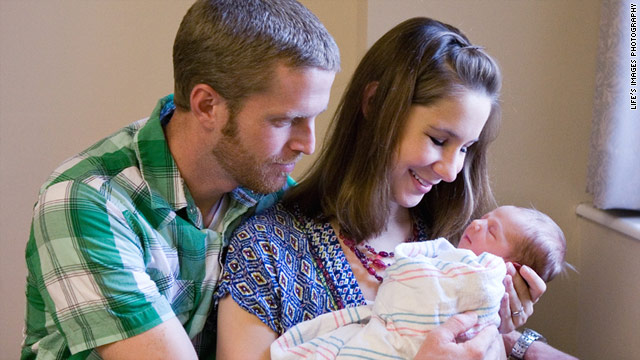Transformers: Dark of the Moon
The robots' red glare, the bombs bursting in air, gave proof through this Independence Day weekend that the
Transformers franchise still had muscle to spare.
Transformers: Dark of the Moon, third in Michael Bay's HASBRO-Spielberg series of epic-length, fortissimo toy commercials, earned $97.4 million during the standard three-day weekend, and $116.4 million for the four-day holiday frame, according to early studio estimates. In its first six-and-a-half days, from Tuesday-night screenings through July 4th, the 3-Destructo-fest will have earned about $181 million in North America. Those mighty numbers left all competitors in the rubble, including Tom Hanks and Julia Roberts, whose recession-era romantic comedy
Larry Crowne took in just $15.7 million from Friday to Monday, or about a seventh of the
Transformers haul.
Optimus Prime and his bot pals hit a goal that most blockbusters aim for: attracting customers who are young (55% of the audience was under 25) and male (62%) and willing to pay extra for the bells, whistles and tinted glasses. Three-fifths of the film's gross came from 3-D showings, and $13.8 million from IMAX screens. A solid "A" CinemaScore rating from early moviegoers indicates that
Dark of the Moon isn't going away any time soon. And as hot as
T3 was in North America, it was scalding abroad. The movie equivalent of an all-star tractor pull earned $217 million in 58 territories, which was more than 50% ahead of the overseas take for the series' 2009 predecessor,
Revenge of the Fallen. Nearly $400 million in a week: all in all, well played, sirs.
(See Richard Corliss's review of the new Transformers movie.)
Except. The $97.4 Fri.-Sun. domestic figure was well below the $109 million three-day weekend take of
Revenge of the Fallen, which didn't benefit from the 3-D surcharge. And it meant that, for the first time in a decade, no Hollywood film released in the first half of the year grossed as much as $100 million on its opening weekend.
Consider that, by this time last year, three movies —
Alice in Wonderland, Iron Man 2 and
Toy Story 3 — had enjoyed weekends in excess of $110 million.
Transformers 2 crossed the nine-figure mark in June 2009, as did the fourth
Indiana Jones caper in May 2008. May 2007 saw three smash hits:
Spider-Man 3 at $151.4 million,
Shrek the Third at $121.6 million and the third
Pirates of the Caribbean at $114.7 million.
X-Men: The Last Stand had a three-day gross of $102.75 million in May 2006, and the May before that
Star Wars: Episode Three — Revenge of the Sith earned $108.5 million. In June 2004,
Harry Potter and the Prisoner of Azkaban opened to $93.7 million, or about $123 million at today's ticket prices; and the $91.8 million that
The Matrix Reloaded earned in its first three days in May 2003 would tabulate to about $125 million today. Add the $114.8 million opening of the original
Spider-Man in May 2002, and you have a nine-year string of one or more $100-million movies released before July 4th. A string that snapped this week.
We grant that, for a blockbuster opening on a Tuesday night, moviegoers who don't catch it until Friday are considered stragglers.
T3's most ardent fans had pumped $64.7 million into the coffers by the close of business Thursday. And nobody who has profit participation in the movie is going to go broke. But it now looks as though the first 2011 movie to break $100 million in its opening weekend will be — had better be — the final
Harry Potter film, hitting the screens July 13.
(See the 25 All-TIME Best Animated Features.)
Cars 2, Pixar's G-rated answer to the
Transformers demolition derby, finished second with a 60% drop from last weekend's tally — the biggest second-week fall-off of any Pixar feature. And Cameron Diaz's
Bad Teacher survived a stern C-plus from CinemaScore pollees to take third place over
Larry Crowne, in which Roberts plays Nice Teacher to Hanks' unemployed everyman. Four years ago, these golden stars of the '90s teamed for
Charlie Wilson's War and cruised to a sleepy $66.7 million domestic total.
Larry Crowne, which Hanks directed and co-wrote as well as starred in, will be lucky to reach even that middling empyrean. Even further behind, but meeting its modest expectations, was
Monte Carlo, starring ex-Disney teen hottie Selena Gomez. Intended to separate young females from their discretionary spending, it earned $8.75 million — little bucks from little girls.
As
T3 proves, if you want the really big bucks, make movies for the international audience; glamour, action and loud noises are understood in any language. This weekend, the utterly vapid
Pirates of the Caribbean: On Stranger Tides crossed the $1 billion mark in worldwide ticket sales. It is just the eighth movie to reach that mark, and the third to star Johnny Depp (after
Alice last year and
Pirates 3 in 2007). The
Pirates and
Transformers movies may be warmly recalled only by their accountants, but in the movie business, that calls for a Hollywood holiday. More fireworks, please.
(See the top 10 expendable girlfriends and the men who briefly loved them.)
Here are the three- and four-day estimates of the holiday weekend's top-grossing pictures in North American theaters, as reported by Box Office Mojo:
1.
Transformers: Dark of the Moon, $97.4 million Fri.-Sun., $116.4 million Fri.-Mon.; $181.1 million, first six days
2.
Cars 2, $26.5 million, Fri.-Sun., $32.1 million, Fri.-Mon.; $123 million, second week
3.
Bad Teacher, $14.5 million Fri.-Sun., $17.6 million Fri.-Mon.; $63 million, second week
4.
Larry Crowne, $13 million Fri.-Sun., $15.7 million, Fri.-Mon., first weekend
5.
Super 8, $7.8 million Fri.-Sun., $9.5 million Fri.-Mon.; $110.1. million, fourth week
6.
Monte Carlo, $7.5 million Fri.-Sun, $8.75 million Fri.-Mon., first weekend
7.
Green Lantern, $6.6 million Fri.-Sun., $8 million Fri.-Mon.; $103.7 million, third week
8.
Mr. Popper's Penguins, $5.4 million Fri.-Sun., $6.85 million Fri.-Mon.; $51.9 million, third week
9.
Bridesmaids, $3.8 million Fri.-Sun., $4.4 million Fri.-Mon.; $153.8 million, eighth week
10.
Midnight in Paris, $3.7 million Fri.-Sun., $4.3 million Fri.-Mon.; $34.5 million, seventh week
















